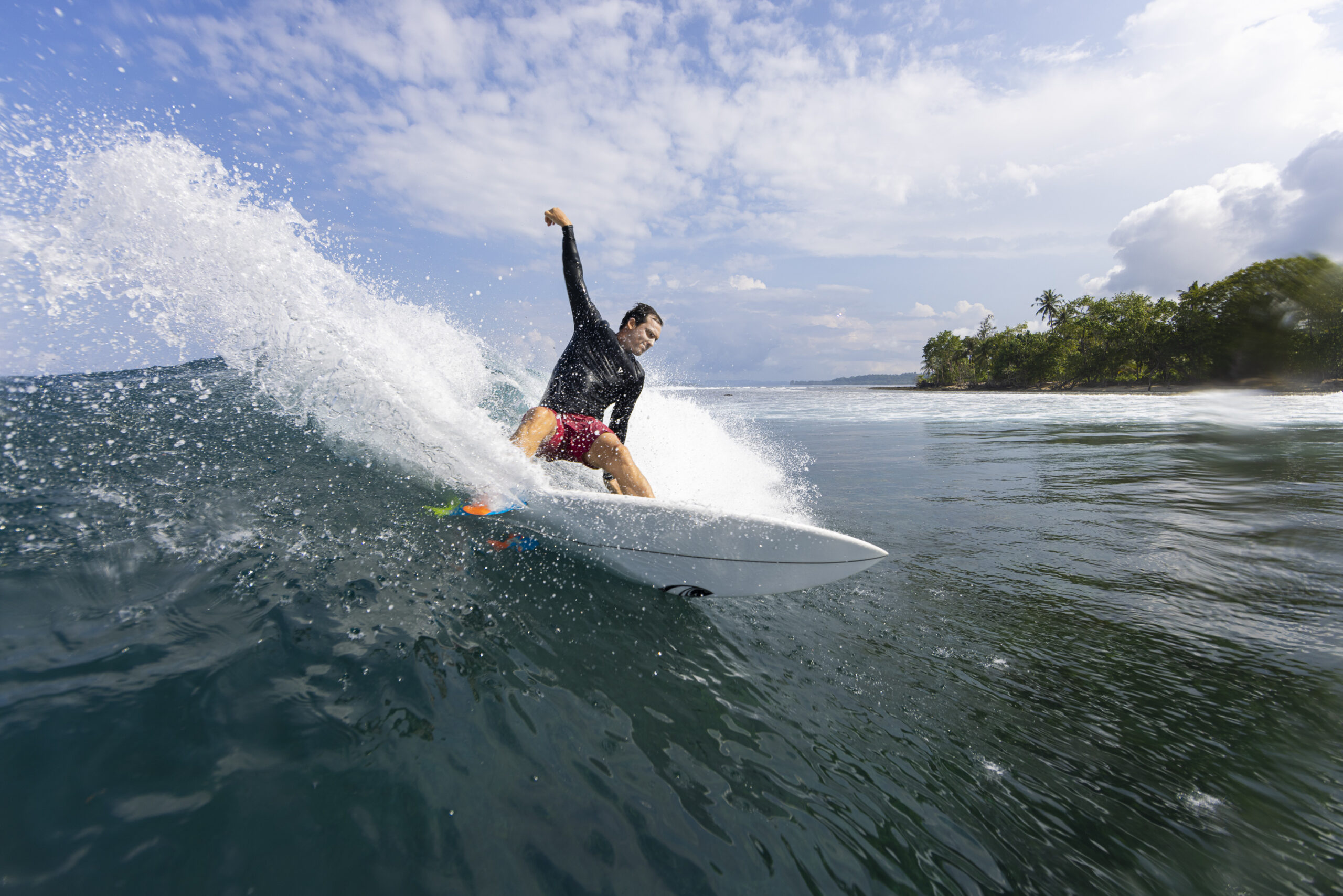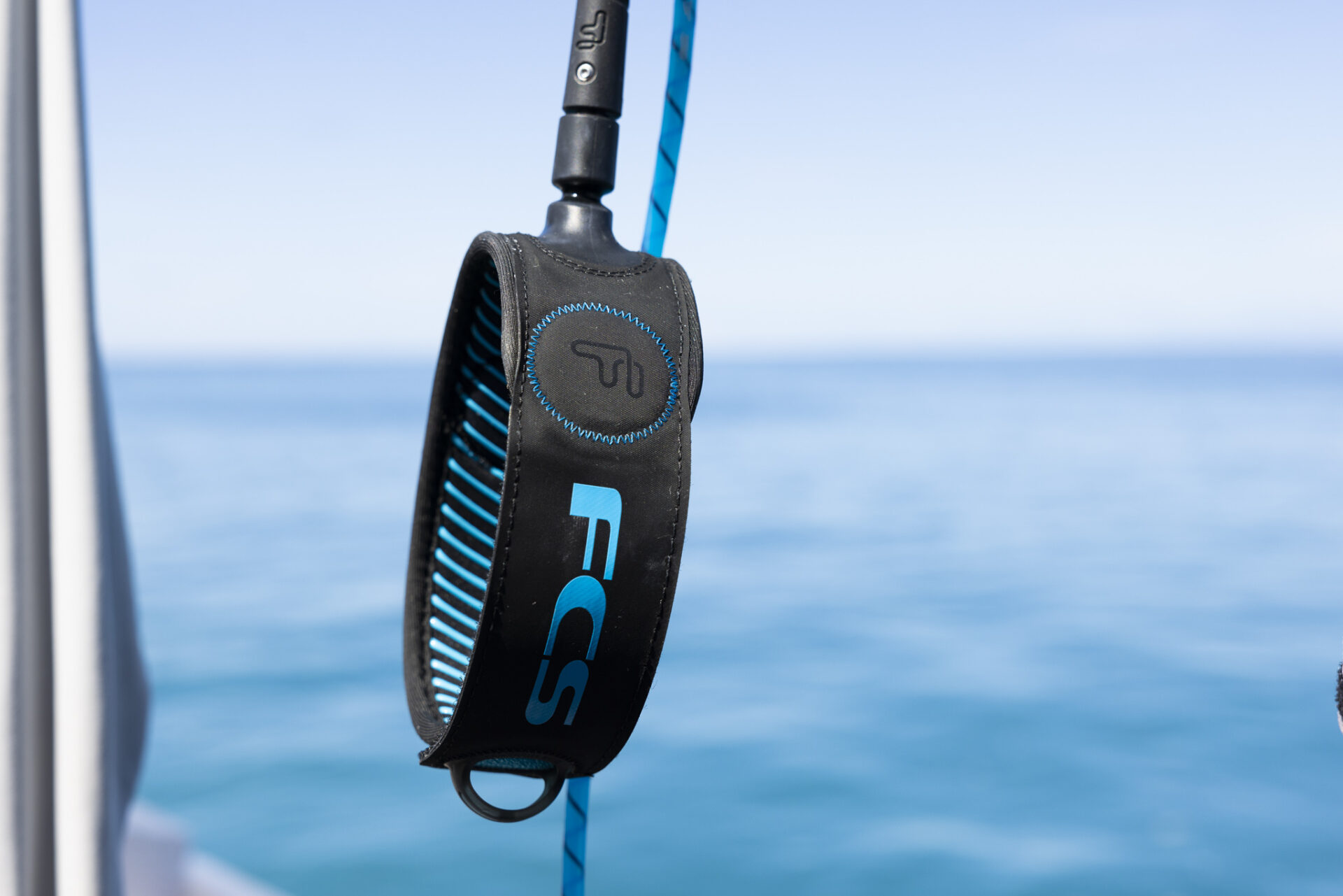For the most expensive legrope on the market, the FCS Freedom Helix Leash has one disappointing, fundamental flaw.
When the FCS Freedom Leash came out we were impressed by the design and feel. However, we encountered a handful from a “faulty batch” that saw the inner core break away inside the woven sheath. Not ideal. We were reassured this was a batch-specific manufacturing fault only and FCS promptly replaced the legrope through our local surf shop. Great.
Over a few months of use we started to see a few cracks in the Freedom Leash’s design. Mostly, the woven outer nylon layer collected wax and any other substance it could get its mitts on, increasing drag through the water and aging the leash pretty quickly. The bright colours quickly faded and the leash lost its shine.

So when the latest Freedom Helix Leash came out and had jettisoned the nylon weave outer, we had to think FCS had taken notice. And certainly at $94.99 retail, we felt this must surely be the best legrope ever created.
The marketing had us sold. It claimed the Freedom Helix is the lightest leash in its range (10% lighter than the original Freedom leash) with titanium swivels and a thinner cord diameter. Yes, thinner is better. FCS also added subtle bumps to its new bio-resin (50% corn-based) cord to “smooth water flow” and reduce drag. Well, yes, possibly. The inner helix is designed to straighten under load to apply increasing resistance during a stretch.
They did more or less keep the lightweight, hydrodynamic cuff and railsaver components from the original and we’re glad they did. The lightweight, svelte design is what makes this leash so good.
FCS, which traditionally has been all about fancy plastic packaging for maximum point of sale dazzle, also dipped a toe in the sustainability bucket with this new leash. Firstly, the cord uses 50% corn-based resin – EcoBlend resin. It also happens to be stronger than the original models. Secondly, and well deserving of applause, the packaging is designed to ship, store, and display using zero plastic. FCS uses a packaging tray made of sugarcane pulp, which is recyclable.
And so we ordered a heap, jumped on a plane and flew to the Mentawais to test the buggers. We expected big things … we never expected what happened next.
We ordered a heap, jumped on a plane and flew to the Mentawais to test the buggers. We expected big things … we never expected what happened next.
The first few surfs went fine – the leash performed as a premium leash should. Slick, great design and simple to use with minimal drag as we stroked into 2-4 foot Mentawai perfection day after day.
Then around Day 3 we surfed a 2-3 foot barreling right that we had mostly to ourselves when Brett took off on a two-footer – the first of a set of waves. He pulled into an innocuous-looking section, got some travel time then dusted only to pop up and discover his board washing toward the reef. To all of our surprise the leash hadn’t broken. The velcro had simply undone around his ankle.
It was a frantic swim as the next set loomed. Brett got there just in time … moments before the next wave trashed his brand new Sharp Eye 77 against the reef. We scratched our heads trying to understand how that could happen – surely that’s a fundamental design must-have? It could have been the end of a $1200 board not to mention the bark you’d lose grovelling across a coral reef to retrieve it.

Since the invention of the humble legrope (and a nod to Roger Titcombe, who used medical tubing to produce the first ones seen in New Zealand) the one function has been to keep the surfer connected with the board and the board off the rocks.
The first time it happened we convinced ourselves it must have been a freak incident. The second time – the following day, we decided these leashes weren’t up to the task. Again the velcro just let go and parted ways in an equally dangerous situation. We weren’t prepared to risk losing a board to the reef a third time.
In context, most surfers in New Zealand wear a steamer wetsuit and run their leg cuff over the leash. In this scenario we think the leash will be less likely to eject in the same way. However, we’re not game to risk a $1200 board, and so won’t be using these leashes again. For the most expensive legrope on the market we think FCS should have got that right.


